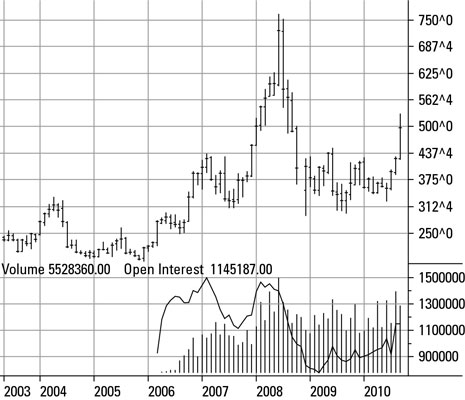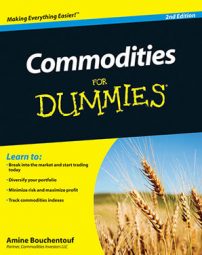Corn, like other commodities such as crude oil and coffee, comes in different qualities. The most important types of corn you should be familiar with are high-grade number 2 and number 3 yellow corn, which are both traded in the futures markets.
The most direct way of investing in corn is by going through the futures markets. A corn contract exists, courtesy of the Chicago Mercantile Exchange (CME), helps farmers, consumers, and investors manage and profit from the underlying market opportunities. Here are the contract specs:
Contract Ticker Symbol: C
Electronic Ticker: ZC
Contract Size: 5000 Bushels
Underlying Commodity: High grade No. 2 or No. 3 Yellow Corn
Price Fluctuation: $0.0025/bushel ($12.50 per contract)
Trading Hours: 9:05 a.m. to 1:00 p.m. Open Outcry, 6:30 p.m. to 6:00 a.m. Electronic (CST)
It’s important to know the trading hours for corn and other commodities that trade both on the open outcry and through electronic trading. Open outcry hours are a legacy from the pre-Internet age, when people traded all contracts on the trading floor; you can still participate in this trading method during the hours noted. The electronic trading system is the latest addition and is much quicker, so you can be sure to get your orders placed quickly and efficiently. The open outcry system is slowly being phased out; eventually, electronic trading will permanently replace it.
Trading Months: March, May, July, September, December
Corn futures contracts are usually measured in bushels (such as the corn contract offered by the CBOT). Large scale corn production and consumption is generally measured in metric tons.
Historically, the United States has dominated the corn markets, and still does due to abundant land and helpful governmental subsidies. China is also a major player and exhibits a lot of potential for being a market leader in the coming years. Other notable producers include Brazil, Mexico, Argentina, and France.
| Country | Corn Production (Millions of Tons) |
|---|---|
| United States | 307 |
| China | 165 |
| Brazil | 51 |
| Mexico | 25 |
| India | 18.5 |
| South Africa | 12.7 |
| Argentina | 12.6 |
| Ukraine | 11.4 |
| Canada | 10.5 |
Source: U.S. Department of Agriculture
Like other agricultural commodities, corn is subject to seasonal and cyclical factors that have a direct, and often powerful, effect on prices. Prices for corn can go through roller coaster rides, with wild swings in short periods of time.

For more information on the corn markets, check out the following sources:

